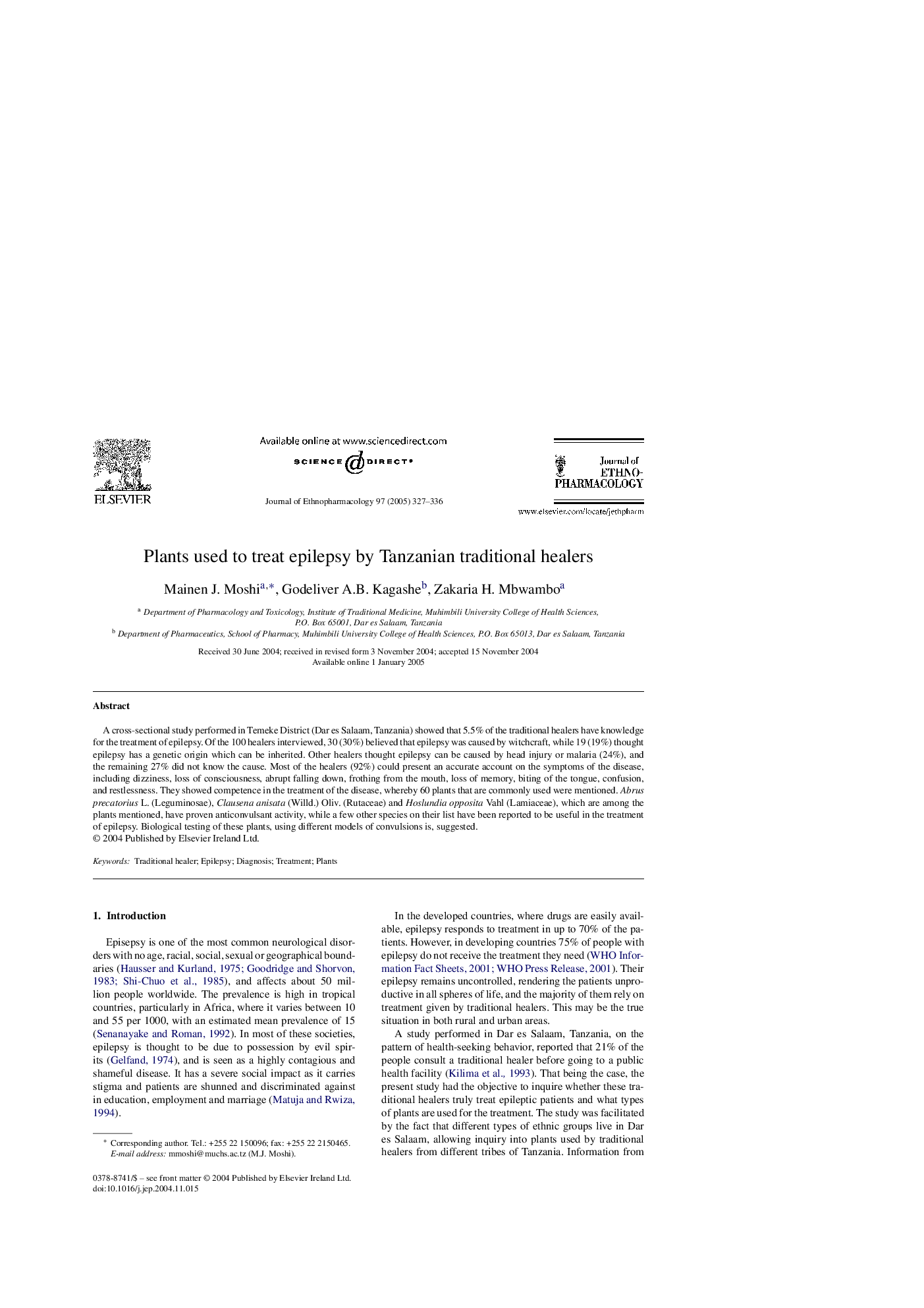| Article ID | Journal | Published Year | Pages | File Type |
|---|---|---|---|---|
| 9011458 | Journal of Ethnopharmacology | 2005 | 10 Pages |
Abstract
A cross-sectional study performed in Temeke District (Dar es Salaam, Tanzania) showed that 5.5% of the traditional healers have knowledge for the treatment of epilepsy. Of the 100 healers interviewed, 30 (30%) believed that epilepsy was caused by witchcraft, while 19 (19%) thought epilepsy has a genetic origin which can be inherited. Other healers thought epilepsy can be caused by head injury or malaria (24%), and the remaining 27% did not know the cause. Most of the healers (92%) could present an accurate account on the symptoms of the disease, including dizziness, loss of consciousness, abrupt falling down, frothing from the mouth, loss of memory, biting of the tongue, confusion, and restlessness. They showed competence in the treatment of the disease, whereby 60 plants that are commonly used were mentioned. Abrus precatorius L. (Leguminosae), Clausena anisata (Willd.) Oliv. (Rutaceae) and Hoslundia opposita Vahl (Lamiaceae), which are among the plants mentioned, have proven anticonvulsant activity, while a few other species on their list have been reported to be useful in the treatment of epilepsy. Biological testing of these plants, using different models of convulsions is, suggested.
Related Topics
Health Sciences
Pharmacology, Toxicology and Pharmaceutical Science
Pharmacology
Authors
Mainen J. Moshi, Godeliver A.B. Kagashe, Zakaria H. Mbwambo,
